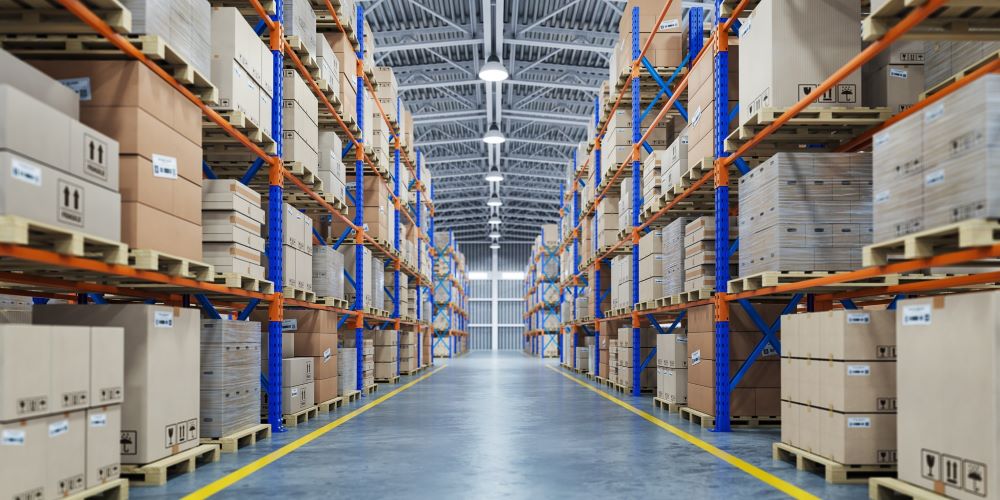
Your online sales are booming like never before, which can only mean one thing: A tsunami of returns is headed your way. If your fulfillment partner doesn’t handle them right, it could sink your business. But how do you know if your 3PL can handle the challenge ahead? Find out what you should look for to determine if your fulfillment provider is up to the task.
Does your ecommerce fulfillment partner take returns seriously?

Reverse Logistics Is a Crucial Element for Fulfillment Centers
Returns happen for a number of reasons – a customer bought the wrong item, they didn’t like it, the item needs repair, or perhaps your logistics company made an error. Do you know how your customers will send back the products they don’t want? Do you know your fulfillment center’s return and exchange processes? If not, you have a major problem brewing, making it vital to sort out your reverse logistics chain.
Reverse logistics refers to the process by which items you originally sent out to customers find their way back into your possession. A reverse logistics chain can be thought of as the forward logistics supply chain for your order fulfillment process set in reverse. Returns can get expensive, making it important for you to keep those costs down. An inefficient return process can also hurt your reputation among customers and negatively impact your sales.
A robust reverse logistics system is important for businesses, because it improves customer satisfaction and trims losses on returns. Additionally, returns can get expensive and are easy to lose track of. Flawed reverse logistics systems can cause customers to experience delayed deliveries or to receive the wrong items. A clear reverse logistics process can reduce the losses on returns and improve customer satisfaction overall, because customers mostly care about the experience they have with brands.
General Reverse Logistics Process
While the reverse logistics process varies from business to business, the general process is as follows:
- The customer prints off a shipping label provided by you or your logistics partner
- The customer then ships the item to the address you provide for returns
- The item arrives at the fulfillment warehouse for evaluation and is either:
- repackaged and restocked
- sent further up the logistics chain for repairs and refurbishment
- destroyed
- returned to the customer through avoidance
Benefits of a Reverse Logistics Plan
A reverse logistics plan carries enormous benefits for your business, including the following:
- Improved customer satisfaction and retention
- Lower costs of absorbing returns by your business
- Lower costs throughout your supply chain as you anticipate returns and better-designed products, packaging, and supply chain for them
- Greater environmental sustainability of your business
- Increased transparency in your supply chain
8 Necessary Reverse Logistics Tactics
Returns are imminent in e-commerce, so your business needs to have a way to handle them. Here are some tactics you can use when building out your reverse logistics and supply chains and process.
Quick and Clear Customer Communication
Customers want everything now, especially when they need to make a return. It’s vital that they receive quick and clear communication to guide them through the returns process. Failure to do this could make customers feel like they’ve been left hanging and they could easily leave a bad review about you online or tell others about your poor service via word-of-mouth.
Return Shipping Protocol
When someone needs to make a return, do you know what steps they’ll need to take? A clear return shipping protocol makes it easier for your customers to send back items and for you to process them. Ultimately, this can save you money, both from lower return costs and from higher customer satisfaction.
Fast Restocking or Sortment of Returned Inventory
Inventory needs to be sorted, evaluated, and re-stocked, repaired, or destroyed as soon as possible upon return. The longer this process takes, the more money your business stands to lose, especially if you’re already writing off the product as a loss or selling it for a lower price.
Timely Customer Refunds
After a customer has returned their product, the last thing they want to do is wait for a refund. Timely customer refunds are a critical part of providing excellent customer service. If your customers are left waiting for weeks to get their money back, your brand could suffer as they complain online and to their social circles about their poor experience with your company.
Remanufacturing or Refurbishment Plan
What are you going to do with broken or faulty items that customers send back to you? A remanufacturing or refurbishment plan can help you salvage value from these items. Refurbishment typically includes repairs and an inspection by the seller, while remanufacturing is a more thorough process that may involve rebuilding a product from the ground-up. Without a plan to recover value from products that need a little TLC, you could lose money.
Repackaging
Once your returned items are safe to sell again, they’ll need to be repackaged. New packaging helps to protect the item until it reaches the customer. It also improves their experience, as they can get the joy of opening a “new” product.
Warranty Infrastructure
What happens if someone wants to return one of your products the day they get it? What if they discover a problem a month after they first bought it or even a year (or three)? It’s vital to build out your warranty infrastructure before you start sending items out, otherwise, your business and your customers could run into trouble. Without proper systems in place, you could easily lose money and your customers could be left in the lurch when their item breaks down through no fault of their own.
End-of-life Recycling
Where will your products go when they’ve reached the end of their useful life? An end-of-life recycling program can help you responsibly dispose of them. This is vital if your products use hazardous materials and require specialized disposal. You can also recover value by harvesting usable parts from items while boosting your company’s social responsibility and environmental-friendliness profile.
Does Your Fulfillment Center Live Up To Your Customers’ Expectations?
Fulfillment centers are vital components of your supply chain and will likely handle your reverse logistics process. If your logistics partner is too slow in processing orders or too costly, the effects could ripple out across your entire business and can manifest in poor customer service and lower revenues. Importantly, just because a fulfillment center or a 3PL is large, doesn’t mean they provide the best service. It’s vital to work with a fulfillment center or 3PL that you can trust to efficiently handle your returns or your business, as a whole, may suffer.
Choose Ship My Orders For Your Reverse Logistics or Fulfillment Needs
In many ways, your reverse fulfillment process is the most delicate portion of your logistics chain. Customers returning an item are already dissatisfied and further problems could cause them to completely sever ties with your company. At Ship My Orders, we know that great relationships with our clients are built on trust, giving us the ability to handle reverse logistics with the care and attention it deserves. Whether you need a fulfillment partner to handle your reverse logistics or require order fulfillment services, contact us today!

-1.png)


